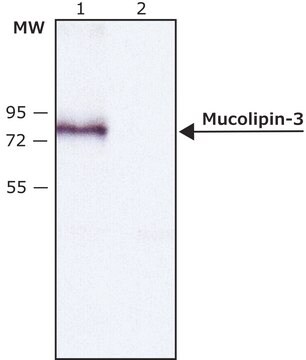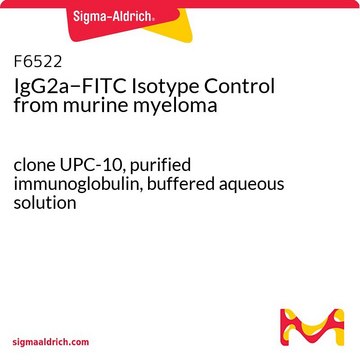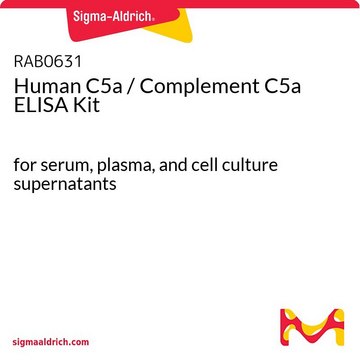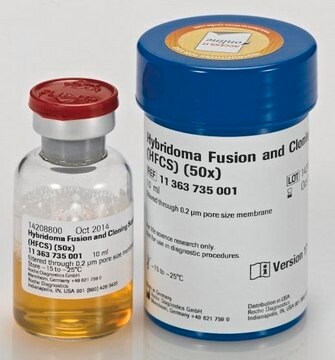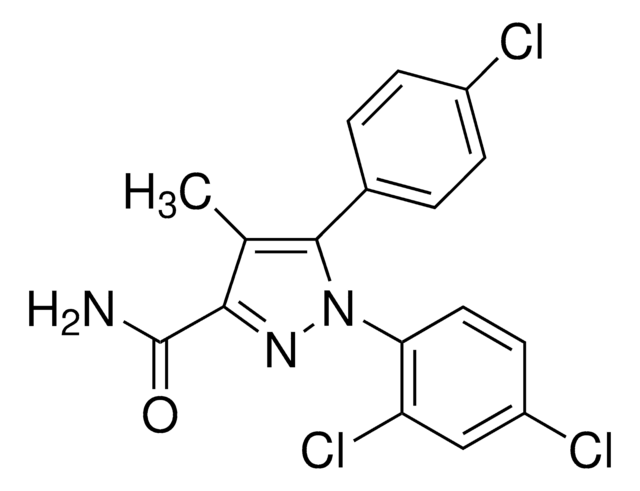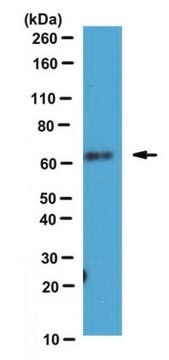推薦產品
生物源
rabbit
共軛
unconjugated
抗體表格
affinity isolated antibody
抗體產品種類
primary antibodies
無性繁殖
polyclonal
形狀
buffered aqueous solution
分子量
antigen ~75 kDa
物種活性
human
加強驗證
recombinant expression
Learn more about Antibody Enhanced Validation
濃度
~1.5 mg/mL
技術
western blot: 0.25-0.5 μg/mL using HEK-293T cells expressing human mucolipin-3
UniProt登錄號
運輸包裝
dry ice
儲存溫度
−20°C
目標翻譯後修改
unmodified
基因資訊
human ... MCOLN3(55283)
mouse ... Mcoln3(171166)
rat ... Mcoln3(308022)
一般說明
Mucolipin 3 (MCOLN3) belongs to the mucolipin family of ion channels and the superfamily of transient receptor potential (TRP) channels. This 553-amino acid protein is expressed in the early and late endosomes of epithelial cells. MCOLN3 possesses six transmembrane domains with the tails oriented towards the interior the cytosol.
Mucolipin-3 is mapped to human chromosome 1p22.3.
免疫原
synthetic peptide corresponding to amino acids 26-43 of human mucolipin-3. This sequence is identical between human and mouse and highly conserved in mouse and rat.
應用
Anti-Mucolipin-3 (N-terminal) antibody produced in rabbit
has been used in immunoblotting and immunostaining.
has been used in immunoblotting and immunostaining.
生化/生理作用
Mucolipin 3 (MCOLN3) is a Ca2+-permeable channel which regulates the cargo traffic along the endosomal pathway. Its activity is regulated by changes in the pH. Overexpression of MCOLN3 in cells lead to large variations in the endosomal pathway and the depletion in its levels leads to the degradation of the epidermal growth factor receptor (EGFR).
Mutations in mouse mucolipin3 (MLN3, TRPML3) encoded by the MCOLN3 gene, are associated with deafness and pigmentation defects in varitint-waddler mice.
外觀
Solution in 0.01 M phosphate buffered saline, pH 7.4, and 15 mM sodium azide.
免責聲明
Unless otherwise stated in our catalog or other company documentation accompanying the product(s), our products are intended for research use only and are not to be used for any other purpose, which includes but is not limited to, unauthorized commercial uses, in vitro diagnostic uses, ex vivo or in vivo therapeutic uses or any type of consumption or application to humans or animals.
未找到適合的產品?
試用我們的產品選擇工具.
相關產品
產品號碼
描述
訂價
儲存類別代碼
10 - Combustible liquids
水污染物質分類(WGK)
nwg
閃點(°F)
Not applicable
閃點(°C)
Not applicable
分析證明 (COA)
輸入產品批次/批號來搜索 分析證明 (COA)。在產品’s標籤上找到批次和批號,寫有 ‘Lot’或‘Batch’.。
TRPML and lysosomal function
Zeevi DA, et al.
Biochimica et Biophysica Acta (BBA)-Molecular Basis of Disease, 1772(8), 851-858 (2007)
Expression and vesicular localization of mouse Trpml3 in stria vascularis, hair cells, and vomeronasal and olfactory receptor neurons
Castiglioni AJ, et al.
The Journal of Comparative Neurology, 519(6), 1095-1114 (2011)
Andrew J Castiglioni et al.
The Journal of comparative neurology, 519(6), 1095-1114 (2011-02-24)
TRPML3 is a member of the mucolipin branch of the transient receptor potential cation channel family. A dominant missense mutation in Trpml3 (also known as Mcoln3) causes deafness and vestibular impairment characterized by stereocilia disorganization, hair cell loss, and endocochlear
Mutations in Mcoln3 associated with deafness and pigmentation defects in varitint-waddler (Va) mice
Di Palma F, et al.
Proceedings of the National Academy of Sciences of the USA, 99(23), 14994-14999 (2002)
Jose A Martina et al.
Traffic (Copenhagen, Denmark), 10(8), 1143-1156 (2009-06-06)
The varitint-waddler phenotype in mice is caused by gain-of-function mutations in mucolipin-3 (MCOLN3), a member of the mucolipin family of ion channels. These mice are characterized by defects in pigmentation, hearing loss and vestibular defects, suggesting that MCOLN3 might play
我們的科學家團隊在所有研究領域都有豐富的經驗,包括生命科學、材料科學、化學合成、色譜、分析等.
聯絡技術服務


